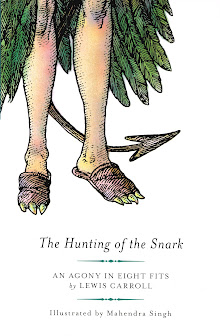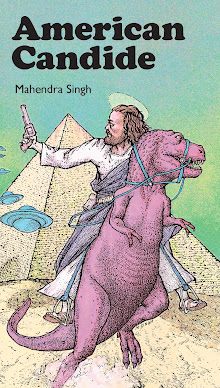
Inking is a physical performance in which the extreme polarity of the marks being made allows little room for fuzzy thinking or clumsy action. One must be precise and accurate whether one's moves are bold or delicate, and in the latter mode, Moebius was the undisputed champion. Not many inkers can keep things so quiet yet energetic, as Moebius did when he was in the mood.
Here’s page 30 of The Airtight Garage and after 34 years, it still makes this inker seethe with a happy envy. It is a performance governed by a simple rule (in addition to the 3 Prime Directives of camera-ready, eye-pleasing black & white line art):
4. Toujours délicat — always delicate!
This page is an homage to the expressive powers of a crowquill nib handled with care. Each panel retreats backwards in point-of-view, shedding detail but always staying crisp and balanced and detailed at the precise level needed to maintain continuity and attract the eye further. The breakup of white space is completely interlocked with the lines, the spotting is perfect — in fact, there is little one can express with words to do justice to this performance.
Note the petillance in panel 2; the woman’s hair is an optical eye-sink which perfectly balances the spotting above her. Also note that on this page, Moebius tackles one of the great technical challenges of any inker: realistically rendering disparate textures in the same page. In panel 1 we have the delicate flesh of a woman (more about that in a moment), the short-napped fur of her jacket collar, the rougher masculine flesh of the hand pointing to her, the burned edges of paper and even the brass screen of a hash pipe with ashes in it. In the next panels we have hair, pearls,, shiny fabrics, a puff ball of sorts and even smoke.
Nothing makes an inker sweat harder than tackling lots of different textures in one rendering, it requires careful choices in choosing one's marking system so that the entire assembly makes sense in the end. If, for example, one over-renders the female’s face, then everything else usually needs more rendering to stay in tune and this may skew the tonal design. If the cigarette smoke had been crosshatched (as Moebius does on other pages of the AG) then the fabric it floats over may need more rendering to keep up visually.
In other words, when rendering disparate textures, the decisions made with the lighter textures set the tone for everything else and when one then considers lighting and modeling (which Moebius ignores here, the scamp!), things can get tricky.
The delicate touch of this page smites this inker’s heart mostly keenly in panel 1, which we see blown up here. It is a bible for crosshatching in the first quarter-tones of the grey scale.
I mentioned that Jerry Cornelius’ face is rendered in the feminine style, ie. when inking women, always maintain a lighter touch and avoid modeling. Supposedly, Moebius used Patti Smith as photo reference for this face, I don’t know if this is true but no matter, he rendered her perfectly. The hatching describes the spherical volumes in the classic Moebius “stabby” short pattern with the classic Moebius 90-degree crosshatching in judicious passages.
Two additional points: first, Moebius has broken one of the Prime Directives here, the linework is dropping out slightly. I’ve seen several different print runs of this page and they are not quite up to snuff. He made the dots and lines of this passage too delicate and they are dropping ever so slightly. This is the danger of delicate crowquill work and this is why most fastidious, delicate cross-hatchers work at same size or very close to it. No reduction minimizes the dangers of sloppy pre-press, digital or photo-neg. It also reduces the sheer amount of labor required in covering the page with obsessive marks.
I know that Moebius had a fetish for inking bigger and bigger at one time in his career; I do not know the original size of this page and if any readers do, please let us know. My gut feeling is that this page was reduced too much — not that it was subjected to sloppy prepress.
The other point is one that seems to perplex some younger illustrators & comix lovers. Using photo reference is a perfectly healthy and useful practice for the illustrator, it is not cheating or “faking”. Before the camera came along, professional artists (ie. illustrators in modern parlance) used models and drew from life, often keeping these drawings in collections which were used as reference by other artists in the studio. When photography came along, they began collecting photographs of appropriate subject matter and continue to do so even now.
The danger of photos lies in their over-use by developing draftsmen, who unwittingly learn to copy the distortions and omissions of the photographic process and thus stunt their growth. Photos always lie in subtle ways and the experienced draftsman learns to correct them without conscious thought, simply by using his good eye.
In any case, despite the dropping of lines, panel 1 is an amazing performance. A delicate mood is maintained despite the wide span of tones and textures being rendered. The crosshatching on the face is classic, it demonstrates the natural evolutionary growth of stippling to hatching to crosshatching.
The delicate touch is a learned touch, it requires the hand to perform at the very edge of its physicality. Moebius mastered it after years of practice and used it to great effect in The Airtight Garage and elsewhere.
Let’s see an example of Albrecht "Big Daddy" Dürer in the same mode, a detail from his Fall of Man engraving. This sample has been blown up considerably and shows a consummate mastery of the stipple-hatch-crosshatch progression executed with the most demanding — and expressive — linear tool ever devised, the engraving burin.
I urge students of inking to visit the site that I got this sample from, it’s a massive blow-up of the engraving from Google and the MOFA-Boston. 75% of everything you need to know about classical, long-line spherical crosshatching is in this engraving. It's all in the hands, baby.
Moebius performed with pen and ink and paper, Dürer performed with steel and copper and engraver’s ink but the song remains the same — a woman’s face, a brass screen, a fur collar — it's all the same melodic, physically-inflected line. If it feels good (to your hand), it's good.










I'm looking forward to the deluxe edition...
ReplyDeletehttp://www.humano.com/album/35823
Thanks for the link, I was unaware of a re-issue. 30x40 cm is probably close to the original size of the artwork, this should be eye-popping. And thank god it's black & white.
ReplyDeleteI just got a copy of the 30*40 edition and was disappointed to see that the normal BD size allows a cleaner view of the art. If you haven't seen it yet I think you'd be shocked at the amount of detail lost in this larger version, there are areas of hatching that just appear blank, it's paradoxical.
DeleteI have not seen this version yet, thanks for letting us know. There are many reasons why linework could drop, even printed larger … I don't wish to sound curmudgeonly but some of the younger people doing pre-press have some very odd technical ideas. As we used to say, every job an adventure. If you want to post a scan of what you're talking about, I'd be very interested to see it.
DeleteThanks for reading the blog!
I like the colour version, but I'm really glad this will be in black and white.
ReplyDeleteThe Major's story is continued in L'Homme du Ciguri
http://www.humano.com/album/35724
and the fantastic Chasseur Déprime, which is black and white, unfinished, but completely mind-blowing.
Alas, I regard the color version as sacriligious and unfit for human consumption … I never read the Chasseur one, I'll give it a spin.
ReplyDelete